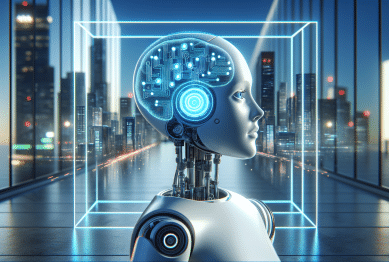Discover how innovations in smart home energy technology can impact utility bills, day-to-day comfort, and even environmental goals. This in-depth guide unpacks what smart devices, AI tools, and renewable integrations actually do – and how real people see benefits by exploring their options.
The Meaning of Smart Home Energy Technology
Smart home energy technology refers to digital systems and devices that monitor, automate, or optimize how energy is used in a household. From learning thermostats to energy-tracking plugs, these tools promise insightful data for homeowners. The central idea is to boost energy efficiency, maintain comfort, and offer financial savings through automation and analysis. Connected sensors and real-time apps have made it simpler to identify appliance patterns and adjust usage—features that many now expect in modern living spaces. Integrating these systems often starts with small upgrades, but the overall impact can be significant when several technologies work together along with traditional appliances (Source: https://www.nrel.gov/research/re-energy.html).
Most smart home energy tools work by capturing detailed information about power consumption and then acting on that data. For instance, a smart thermostat learns daily routines and adjusts heating or cooling to prioritize comfort while avoiding energy waste. Every time preferences are set or overridden, the system refines its algorithm for future predictions. These improvements reduce unnecessary consumption. They also help balance the load during peak demand periods. AI-powered software often coordinates multiple electronics, like lights, HVAC, and water heaters—creating harmony in how these devices interact. Such coordination is not just for tech enthusiasts; many homebuilders now include at least basic smart sensors to meet rising consumer expectations.
The growing adoption of these smart devices owes much to increasing affordability and regulatory encouragement for greater energy responsibility. Many utility companies offer incentives or rebates to support installation, especially when homeowners share their data anonymously to help grid planning. What’s fascinating is how even modest steps, like smart plugs that shut off idle electronics, can reduce both costs and carbon emissions. Bigger commitments—think solar panels paired with smart inverters—can radically shift how much power a household pulls from the grid. As interest grows, the ecosystem of compatible products continues to expand, opening the door for nearly anyone to participate in smarter, greener living.
How Smart Energy Devices Reduce Bills and Waste
Saving on electricity bills is a major motivator for exploring smart home energy technology. Devices such as smart thermostats, appliance controllers, and real-time meters help people visualize their consumption—and understand where adjustments are possible. Turning down temperatures by just a few degrees when no one is home, or scheduling appliances to operate during off-peak hours, can make a clear difference over a span of months. Even small energy savings, compounded over time, add up: occupancy sensors in lighting systems are a prime example, automatically dimming rooms when not in use. In many cases, the payback from these investments is measured in months, not years (Source: https://www.energy.gov/eere/buildings/articles/how-energy-efficient-lighting-controls-save-energy).
Beyond lowering bills, many homeowners appreciate the environmental impact that comes from less electricity waste. Watts shaved off during peak times can help stabilize the local grid, reducing the likelihood of blackouts and lowering the need for fossil-fuel back-up plants. Some smart systems notify users if a refrigerator door is left open or if a heater is fighting against a sunny window. This data empowers informed choices that don’t require constant attention. The ripple effects stretch to community-scale sustainability, as grid operators can more precisely plan loads and predict peaks when homes share smart usage data (always anonymized for privacy).
Utilities often provide extra incentives for adopting demand response programs; these are enabled by advanced smart meters and compatible devices. In a typical example, the utility sends a signal to pre-cool or pre-heat a home just before demand spikes, so energy use drops while rates are at their highest. Participants usually see bill credits, while the broader grid gains resilience. With detailed billing statements and device histories, people can compare how different strategies—like running a dishwasher at night or programming efficient heating cycles—affect their bottom line. Together, these actions foster savings that can be tracked and refined month after month.
Smart Thermostats: Comfort, Adaptation, and Insight
Among smart home gadgets, the smart thermostat stands out for instant usability and measurable results. These devices constantly learn from behavior: how warm or cool a space should be at specific times, when rooms are typically vacant, and seasonal adjustments that align with real-world weather. Modern options utilize both on-device sensors and smartphone location data to anticipate when a person is about to arrive home—or when an entire family is gone for the weekend. The more these systems are used, the more accurately they predict ideal comfort settings while trimming excess consumption. The process is automatic, requiring little day-to-day management.
One feature people value is detailed reporting: many smart thermostats display weekly or monthly trends via web or mobile portals. These insights make it easy to spot energy spikes and test new settings. Some platforms compare household performance to similar homes in the area, which can motivate subtle behavioral changes or fuel curiosity about the latest firmware improvements. Smart thermostats are also often compatible with voice assistants and wider smart home hubs, enabling routines that lower shades, lock doors, or switch on fans—all in sync with climate control preferences. This integrated approach fosters comfort, convenience, and savings for both tech-savvy users and those just getting started.
For those in regions with fluctuating utility prices, a smart thermostat can unlock additional cost-cutting options by scheduling temperature changes to coincide with low-rate periods. Some even participate in time-of-use pricing programs, which reward homes for shifting demand away from peak hours. These advanced setups require a bit more effort initially but offer greater visibility into how different temperatures translate to dollars saved. Feedback from real-world users indicates most are surprised at how swiftly the devices “pay for themselves” through lower monthly bills, while maintaining or even improving comfort at home (Source: https://www.ase.org/resources/market-assessment-smart-thermostats).
Integrating Renewable Energy With Smart Home Systems
Homeowners interested in solar panels, storage batteries, or other renewable technologies increasingly seek integration with smart home systems. The synergy can be striking. Smart inverters coordinate with home sensors to maximize self-consumption of solar energy, minimizing draw from the utility grid. In some settings, batteries learn when to store excess generation (often during sunny midday hours) and then discharge in the evening when rates or demand are higher. These automated controls generate ongoing value without manual oversight and are accessible even to first-time renewable adopters. As distributed energy grows, interoperability between devices remains a top priority for manufacturers (Source: https://www.energy.gov/eere/solar/homeowners-guide-federal-tax-credit-solar-photovoltaics).
For those not ready for rooftop solar or major battery systems, simple upgrades still make a difference. Smart plugs and load controllers can schedule electric vehicle charging or shift laundry cycles when solar production peaks. These technologies align individual habits with neighborhood-wide energy efficiency programs. In some regions, homeowners receive notifications to delay high-wattage tasks, helping balance local grids and boost incentive rewards. As adoption widens, even modest changes begin multiplying across communities—making these tools a foundation for larger, collective environmental impacts.
Greater grid connectivity is also on the horizon. Utility providers and municipalities invest in pilot programs that let communities test peer-to-peer energy trading, virtual power plants, or automated demand-shifting at scale. Households equipped with smart energy tech become active participants in the energy ecosystem—not just consumers, but collaborators. This new paradigm provides feedback both to users, who can maximize reward structures, and to energy managers shaping resilient, more sustainable futures (Source: https://www.nrel.gov/solar/solar-integration-distribution.html).
Getting Started Safely With Smart Home Energy Technology
There are practical steps for anyone considering upgrades in home energy management. Research remains essential, as the range of available technology can be overwhelming. Established online platforms—such as those operated by national energy labs, universities, or government departments—offer unbiased overviews, product comparisons, and security recommendations. Concerns around privacy and device hacking should always be considered; look for brands recognized for robust encryption and clear user controls. Updates to firmware are just as important as with computers and phones, keeping vulnerabilities at bay while maintaining compatibility with evolving standards (Source: https://www.cisa.gov/news-events/news/how-secure-your-smart-home-devices).
Professional installation may be the right option for some smart energy products, especially those that interface directly with electrical panels or central HVAC. Many utility providers partner with certified contractors and may offer home energy audits to suggest priorities. However, countless tools—such as smart plugs or basic monitoring sensors—are simple enough for DIY setup. It is helpful to join local or online communities, where users share successes and cautionary tales alike. Real user stories offer actionable tips about what works (or doesn’t) in your unique environment.
As with any system that collects and transmits personal data, transparency from manufacturers is essential. Reputable brands outline what information is captured, how it is anonymized, and whether it is shared for grid optimization programs. Some even let users opt out of data sharing, providing peace of mind for the privacy-conscious. By starting small, tracking outcomes, and asking questions, anyone can explore the benefits of smart home energy technology safely—and at a pace that fits each individual’s comfort zone and objectives.
Future Possibilities and Expanding Smart Technology Access
The smart home energy landscape continues to evolve rapidly, with more accessible tools and new incentives emerging. Many governments and utilities encourage adoption through rebates or pilot programs. For renters or those unable to invest in major upgrades, smaller devices—like smart strips and app-controlled bulbs—still foster meaningful savings. The next wave of development aims to link households, neighborhoods, and entire cities for even smarter resource management. Interoperable protocols and unified dashboards will streamline adoption, making it easier for the average person to participate.
Smart home energy aligns with larger sustainability, affordability, and comfort goals. As more data flows through these systems, researchers and policymakers can better identify what strategies work at scale. Equity remains a focus, as public programs increase access for low-to-moderate income households. By continuing to blend tech innovation with educational outreach, smart energy solutions remain within reach for more people than ever before (Source: https://www.energy.gov/eere/buildings/building-technologies-office).
The dynamism of this field means there is always something new to learn. Whether through utility newsletters, non-profit guides, or collaborative research, curiosity is rewarded. Reading about others’ experiences opens the door for creative problem-solving and inspires even small steps toward a more efficient, enjoyable, and connected home. This ongoing evolution places everyone at the forefront of the clean energy revolution, simply by asking how technology fits into their own daily routines.
References
1. National Renewable Energy Laboratory. (n.d.). Renewable Energy Research. Retrieved from https://www.nrel.gov/research/re-energy.html
2. U.S. Department of Energy. (n.d.). How Energy-Efficient Lighting Controls Save Energy. Retrieved from https://www.energy.gov/eere/buildings/articles/how-energy-efficient-lighting-controls-save-energy
3. American Council for an Energy-Efficient Economy. (n.d.). Market Assessment of Smart Thermostats. Retrieved from https://www.ase.org/resources/market-assessment-smart-thermostats
4. U.S. Department of Energy. (n.d.). Homeowner’s Guide to the Federal Tax Credit for Solar Photovoltaics. Retrieved from https://www.energy.gov/eere/solar/homeowners-guide-federal-tax-credit-solar-photovoltaics
5. National Renewable Energy Laboratory. (n.d.). Solar Integration: Distribution and Transmission Insights. Retrieved from https://www.nrel.gov/solar/solar-integration-distribution.html
6. Cybersecurity & Infrastructure Security Agency. (n.d.). How to Secure Your Smart Home Devices. Retrieved from https://www.cisa.gov/news-events/news/how-secure-your-smart-home-devices









